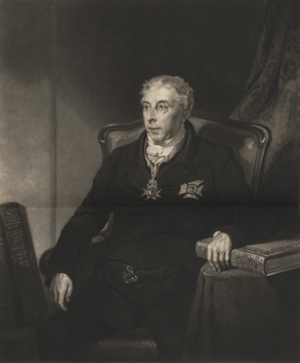Frederick Augusta Barnard facts for kids
Quick facts for kids
Frederick Augusta Barnard
|
|
|---|---|

Frederick Augusta Barnard by Samuel William Reynolds
|
|
| Born | September 1, 1743 |
| Died | January 27, 1830 (aged 86) |
| Occupation | Principal librarian to George III |
| Years active | 1773-1830 |
Sir Frederick Augusta Barnard (born September 1, 1743 – died January 27, 1830) was a very important librarian for King George III. He helped the King build an amazing collection of books, which became known as the King's Library. He even got advice from famous thinkers like Dr. Samuel Johnson.
Contents
Frederick Barnard's Early Life
Frederick Augusta Barnard was born on September 1, 1743. His father was John Barnard, who worked for Frederick, Prince of Wales. His mother was Elizabeth Smith. He was likely named after Prince Frederick and his wife, Princess Augusta.
Frederick started working for the royal family at a young age. On December 26, 1760, he became a Page of the Backstairs to George III. By 1773, he was made the main librarian at Buckingham Palace. He held this important job until he died in 1830.
Building the Royal Library
When King George III became king in 1760, the royal family didn't have a very big library. The old royal book collection had been given to the British Museum in 1757. King George III wanted to create a new, grand library that would show his love for books and his power.
He started by buying a large collection of books in 1763 from Joseph Smith. Smith had been a British Consul in Venice. His collection had many old and important books, especially early printed ones.
The King then sent people to buy books at all the major sales in London and Europe. They bought single books, entire private collections, and even many books from Jesuit libraries that were closing down. These books were all brought to London for the new royal library.
King George III continued to collect books for about 50 years. He bought the best books from famous auctions. His main book agents were Messrs Nicol. He also got very rare old books, called incunabula, from Europe.
The King's Library Collection
The collection became known as the King's Library. It had about 65,000 books and 19,000 pamphlets by the time King George III died in 1820. The library included:
- Books on classical literature
- English and Italian literature
- European history
- Religion
- Examples of very early printing, like a copy of the Gutenberg Bible
- William Caxton's first edition of Chaucer's Canterbury Tales
The library also had magazines, newspapers, and many maps and pictures.
At first, King George III considered the library his own private collection. He didn't easily let scholars use it. However, he always welcomed Samuel Johnson, a famous writer. Later, the library's resources were made available to more scholars.
The King's Library was first kept at the Old Palace in Kew. Then, it moved to a special room called the Octagon Library at Buckingham House. It stayed there until King George IV decided to rebuild Buckingham House after his father's death in 1820. King George IV wasn't very interested in the library. So, in 1823, he gave the entire collection to the British public.
Creating the Library Catalogue
King George III wanted a catalogue of his huge book collection. However, he kept putting it off. After 1812, it became clear he wouldn't get better from his illness. So, Queen Charlotte and the Prince Regent (who later became King George IV) urged that the catalogue be finished.
Frederick Barnard worked hard to put together and publish this catalogue. It was called Bibliothecae Regiae Catalogus. It was printed in five large books between 1820 and 1829. The catalogue was not sold to the public. Instead, copies were given to kings and queens in Europe and to important libraries in the United Kingdom and other countries.
Later Years and Family
Frederick Barnard was recognized for his work. He became a Fellow of the Society of Antiquaries in 1789. He also became a Fellow of the Royal Society in 1790. In 1828, he was made a Knight Commander of the Order of the Guelphs (K.C.H.).
On October 28, 1776, Barnard married Catherine Byde in London. They had a son named George. Frederick Barnard lived for most of his working life in an apartment at St James's Palace. He died there on January 27, 1830, at the age of 87. He was buried in London.
Images for kids
-
The Octagon Library, King George III's original library at Buckingham House



